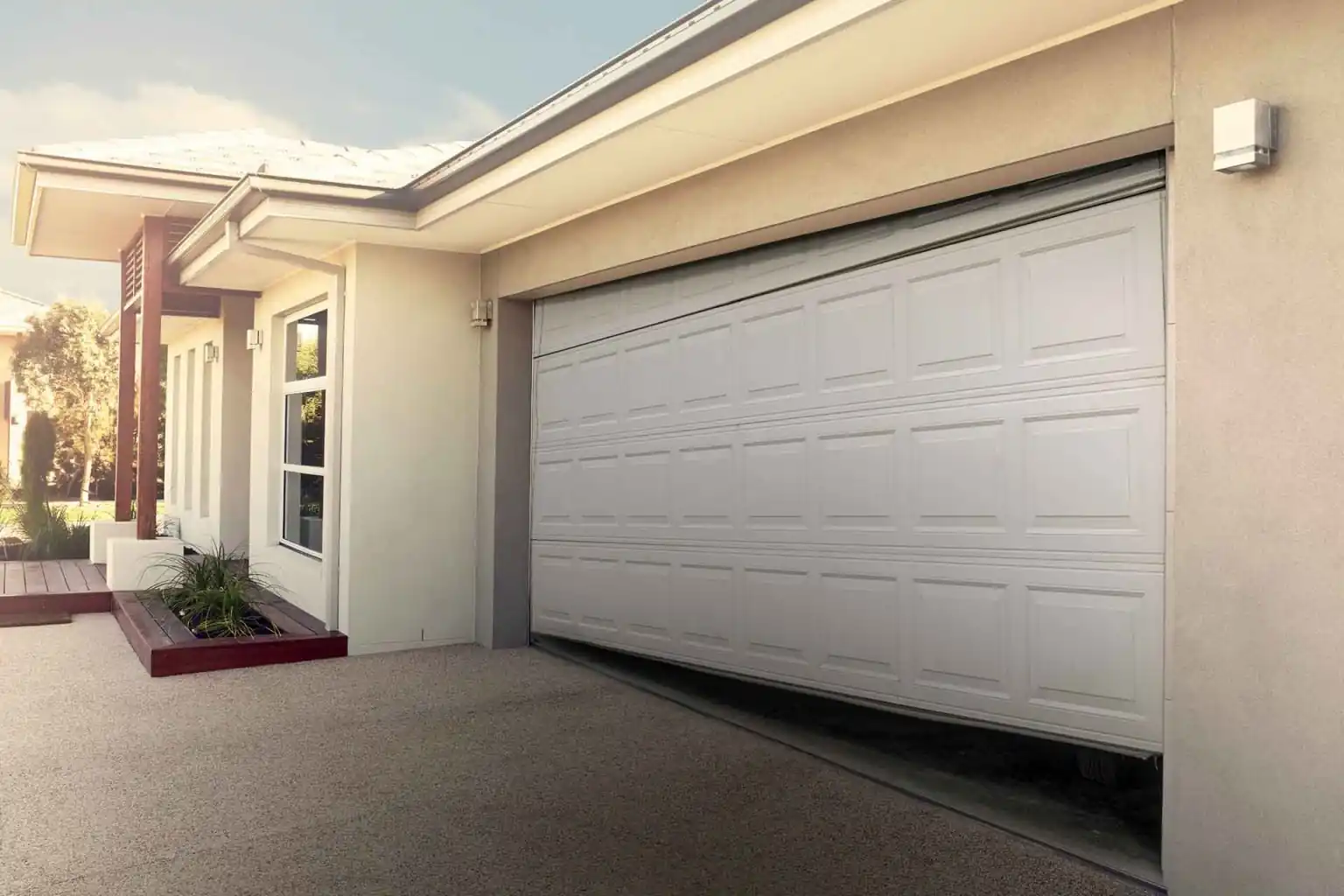You never think about your garage door opener until it doesn’t work — like during a power outage. You’re stuck outside in the rain, or worse, inside trying to get your car out to get to work. The garage door just… sits there. Silent. Unmoving. And suddenly, something you’ve taken for granted becomes a small emergency.
Knowing how to open garage door without power might sound like some niche survival skill, but honestly, it’s something every homeowner should know. Because when the power’s out, your garage door’s motor is useless — and you’re left with a heavy panel of steel, springs, and track to figure out.
How to Open Garage Door Without Power When It’s Out
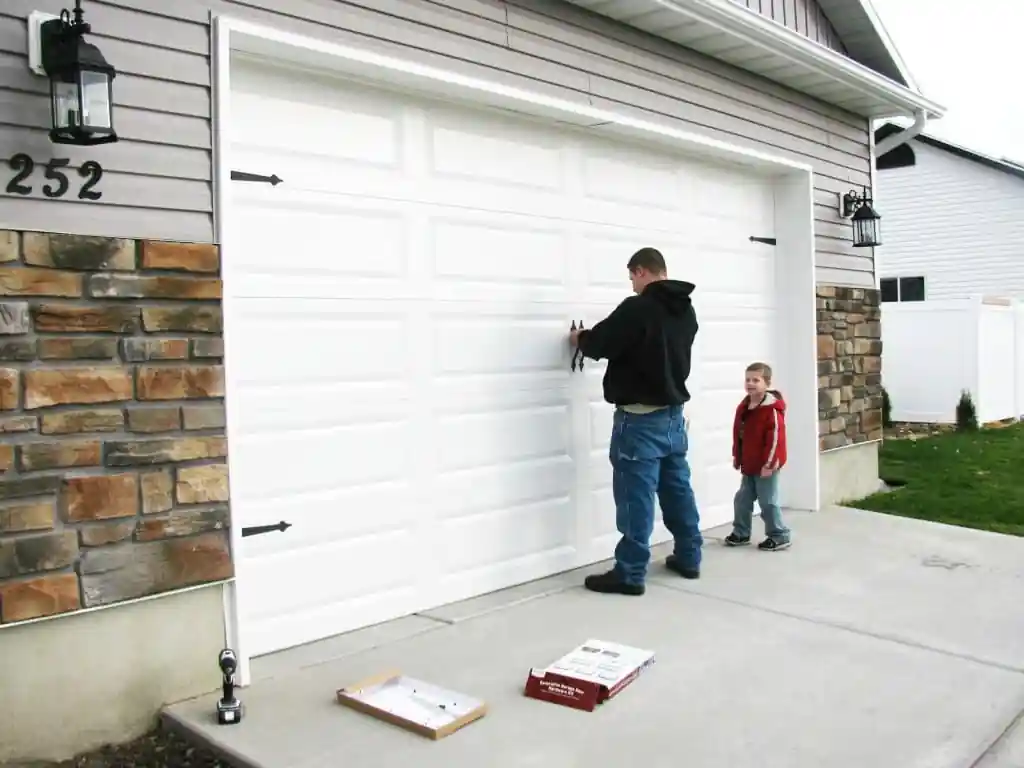
So, we’ll walk through seven essential methods that can help you get that door open safely — whether you’re stuck inside, outside, or dealing with a jammed system. You’ll learn when to pull the emergency release cord, how to tell if a spring’s busted, and what tools you might already have that can help.
Just a heads-up: safety matters more than speed here. Manually open garage door without power can be tricky, even dangerous if you don’t do it right. And in some cases — like a broken spring or a jammed track — forcing it could just make things worse. We’ll talk about that too.
1. Understand How Your Garage Door System Works
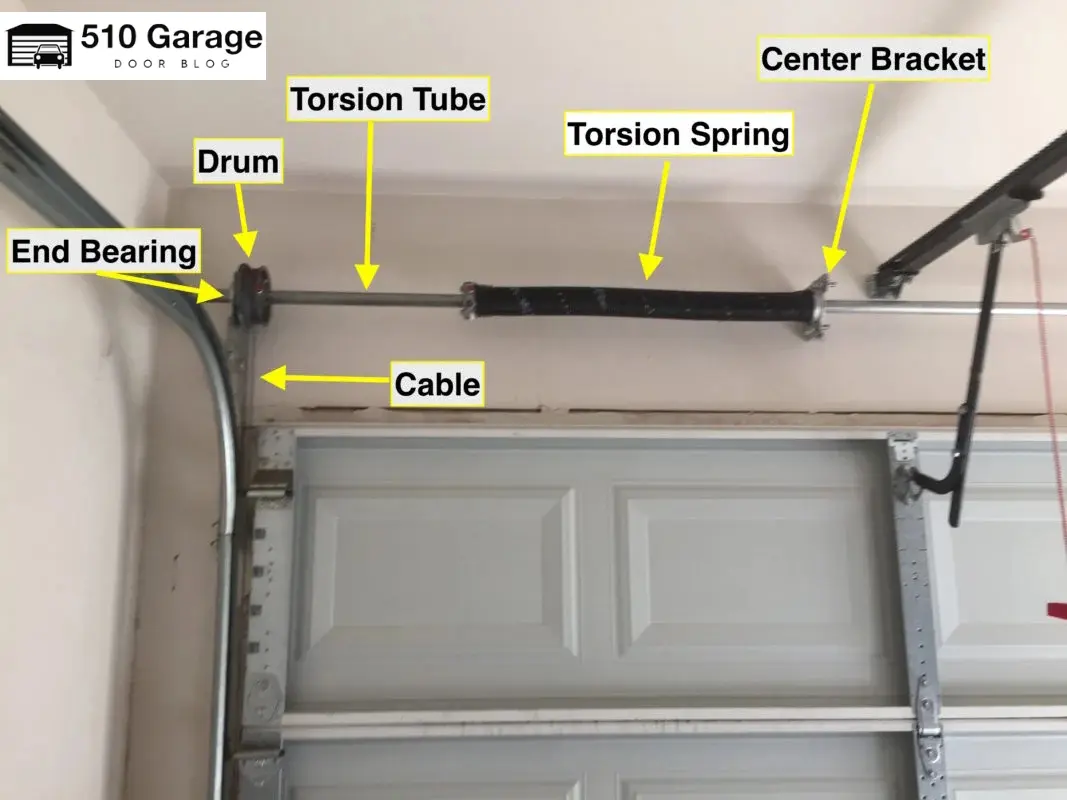
Before you start yanking on any cords or lift panels, it’s worth taking a moment to understand how your garage door system actually works. Because once the power’s out, your automatic opener won’t help you — and you’ll be relying purely on the manual mechanics of your setup.
Know the Components: Motor, Track, Emergency Release
Most automatic garage doors operate on a pretty standard system. You’ve got:
- Garage door motor: Usually mounted on the ceiling, this is the part that pulls the door up or lets it down.
- Track system: That curved metal rail the door slides along.
- Torsion or extension springs: These balance the heavy door’s weight.
- Emergency release cord: Often red, hanging down from the trolley.
When the power outage hits, the motor just hums — if it does anything at all. So your only friend now is that manual release cord, which disengages the door from the motor.
🛠️ Pro Tip: If you’re unfamiliar with your garage door’s design, look at the user manual or check the manufacturer’s site. Most follow similar mechanics, but there are differences — especially in LiftMaster, Chamberlain, or commercial garage door systems.
And remember, the emergency cord only works correctly if the door is fully closed when you pull it. If it’s even slightly open, the door might slam shut — and you really don’t want to be in its path.
2. Locate and Use the Emergency Release Cord
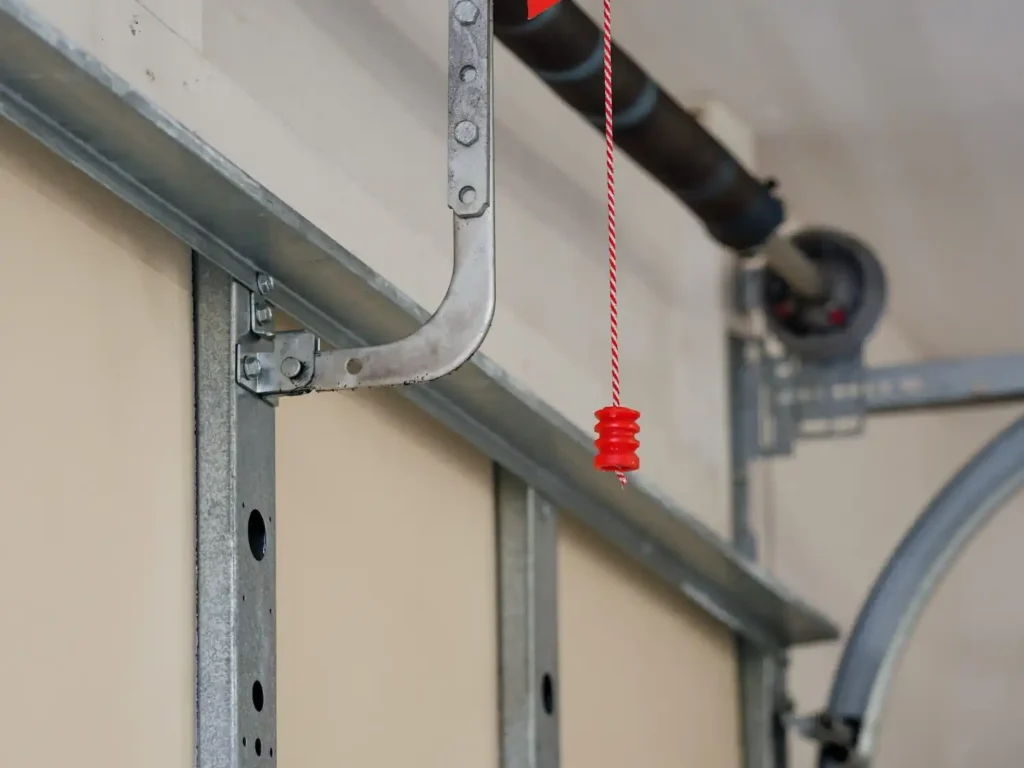
In most cases, especially when you’re inside the garage and the power’s out, this is where you start. The emergency release cord is your manual override — your way to disconnect the door from the opener so you can lift it by hand.
Step-by-Step Instructions to Pull the Release Cord Safely
First off, where is the cord?
If you look up near the garage door motor, you’ll usually see a red cord hanging down from the center rail — the part called the trolley. That’s the manual release cord, and it’s there for situations like this.
Here’s how to use it safely:
✅ Step-by-step: How to use the emergency release cord
- Make sure the garage door is fully closed – prevents sudden slamming when disconnected
- Locate the red emergency release cord – usually hanging from the center trolley
- Firmly pull the cord straight down – this disengages the trolley from the opener
- Check that the door now moves freely by hand – confirms it’s in manual mode
🛠️ Pro Tip: Before pulling the emergency release cord, make sure your door is fully closed and safe to release. Most garage safety manuals stress this step to avoid injury. On newer electric garage door models, the trolley release arm may need to be gently moved into position before re-engagement.
Also — and this gets overlooked — if you have a LiftMaster garage door, or other smart opener systems, the release mechanism might be slightly different. You may need to pull back and down instead of straight down. If you’re not sure, check your model’s guide or search the brand + “emergency release.”
And for people searching how to open garage door without power manually from inside — this is it. The emergency release cord is what lets you open garage door without power manually from inside your garage.
3. Open the Garage Door from Inside

So you’ve pulled the emergency release — now what? You’re standing there, flashlight in one hand, maybe coffee in the other, and you’re about to do something you’ve likely never done: manually lift your garage door.
Manual Lift Technique to Open Without Damage
Here’s what I learned (and honestly didn’t expect) when I had to do this myself during a blackout: the door’s heavier than you think. That’s because the garage door spring system, normally balanced by the opener, isn’t helping much anymore — and if the spring is damaged, it’s a whole different beast.
Let’s keep this simple.
🧰 How to open the garage door manually from inside:
- Grip the door firmly at the bottom center (there’s often a handle or ridge).
- Lift steadily, not jerkily. Use your legs, not just your arms or back.
- If it resists, stop. The door might be jammed, or the torsion spring might be broken.
- Once it’s fully up, prop it open with something sturdy if you need it to stay up. Don’t trust it to hold itself.
🛠️ Pro Tip: If your garage door won’t budge, or if it moves a few inches then slams down again, chances are the spring is broken. And lifting a door with a broken spring is dangerous — really dangerous. Call a garage door technician or a garage door repair service immediately.
4. Opening the Garage Door from Outside (Without a Keypad)
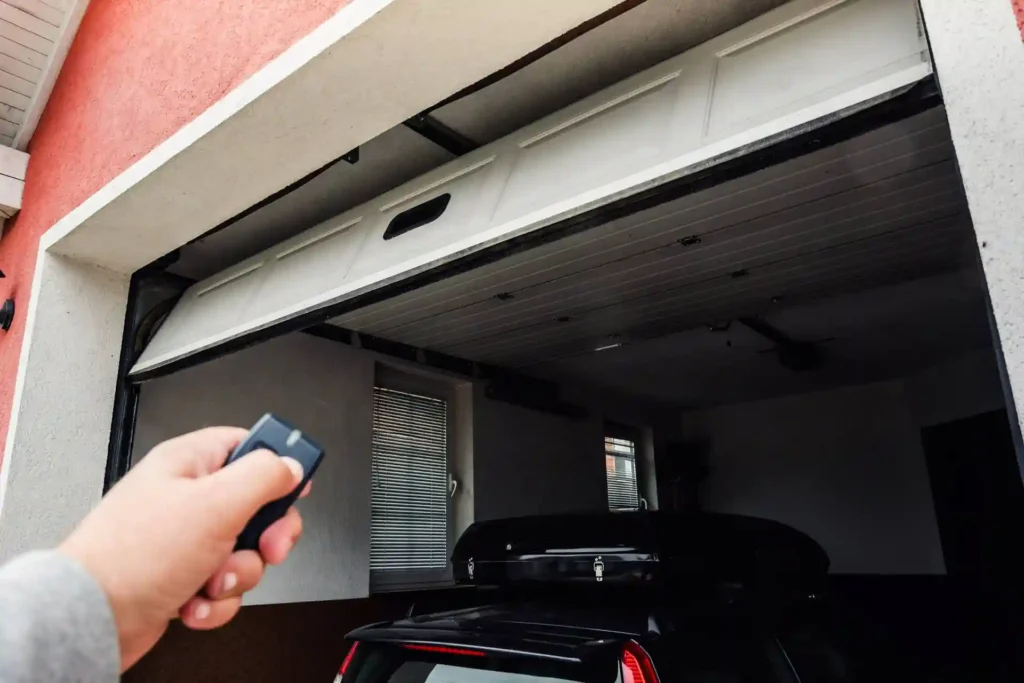
Now, this one’s tricky — especially if you’re locked out during a power outage and don’t have a remote or keypad access.
At this point, you’re probably typing how to open garage door manually from outside without a key into your phone, standing in your driveway, frustrated and possibly wet.
Use an Emergency Key Release Kit
If your garage is attached to your home, you can often get inside through another door and use the emergency release cord from the inside (we just covered that).
But if your garage is detached, or if your home is locked up too, you’re going to need something called an emergency key release kit.
What is it?
It’s a small lock (usually in the center of the top garage panel) that lets you insert a key and pull a cable from the outside — basically doing the job of the emergency release without stepping inside.
Here’s what it typically involves:
- A cylinder lock installed through the garage door
- A cable running from that lock to the emergency release mechanism
- A key that unlocks the cylinder and lets you pull the cord through the hole
🚪 How to open your garage door from outside (with key release kit):
- Insert the key into the emergency release lock (center panel of garage).
- Turn and pull to disengage the trolley.
- Manually lift the door from the bottom panel.
🔒 Pro Tip:
If you’re planning ahead — install one of these now. They’re not expensive, and some even come with your garage door system (check the box you stuffed in a closet five years ago). Once the garage door opener loses power, you’ll be grateful for it.
Oh, and don’t forget to keep the key in a safe but accessible place — not inside the garage.
If you’re asking how to open LiftMaster garage door manually from outside — yep, same principle applies. You’ll need that emergency lock kit.
5. What to Do If Your Garage Door Is Locked

Sometimes the problem isn’t the power. It’s the lock.
You’ve disengaged the opener, pulled the release cord, tried lifting — and nothing moves. That’s when you realize… the manual side-lock bar or a deadbolt is engaged.
Unlocking the Door Without Power
Garage doors often have a manual lock feature — especially on older or non-automatic models. It might be something you or someone else engaged without realizing it, or it could just snap shut if the door slams too hard.
And when the power outage hits? You’re left with a very secure but very immovable garage door.
🔍 How to check if your garage door is manually locked:
- Look on both sides of the door near the tracks — do you see sliding lock bars?
- Is there a deadbolt on the side panel or near the handle?
- Try pulling the door up slightly — if it doesn’t even give a little, it’s likely locked.
Ways to unlock a garage door without power:
- Slide the side-lock bar inward manually (may require a firm push)
- Use your key if there’s an external key lock (check both left and right panels)
- Enter through another entrance if a deadbolt is engaged (a common oversight)
🔑 Pro Tip:
If you’ve lost your garage door key and you’re stuck outside during an outage, a locksmith near you can help — some specialize in garage door locks and carry tools for emergency entry.
Also — if you’ve had security upgrades recently (like smart locks or keypad systems), make sure they have manual overrides or battery backups. The last thing you want is a high-tech solution that fails in a low-tech emergency.
6. Check for Spring or Track Damage Before Lifting
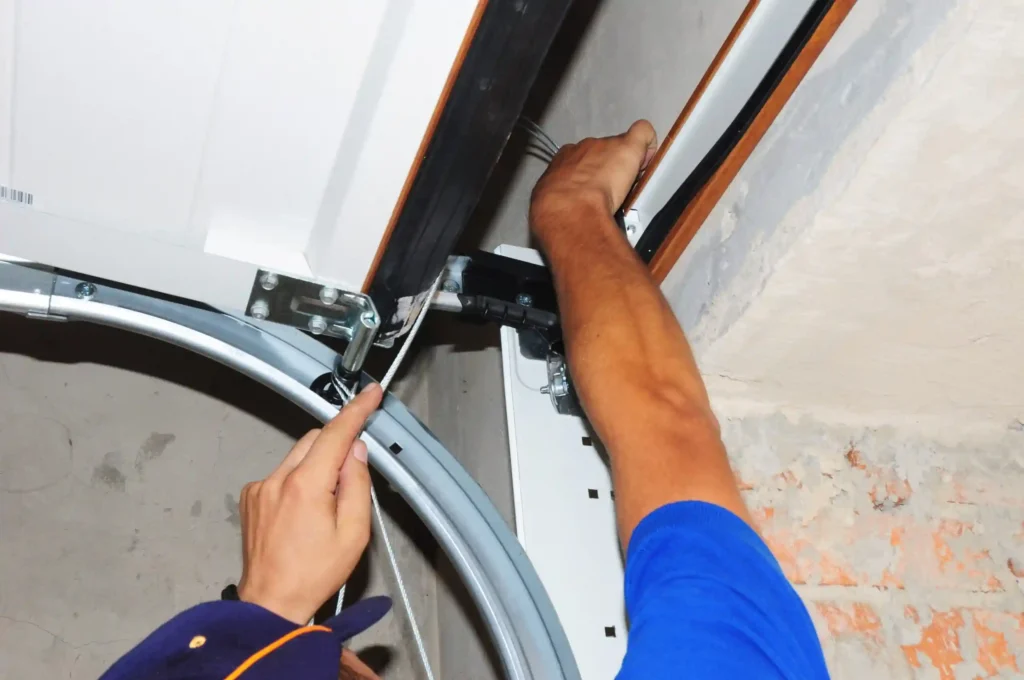
Alright, this part? Honestly, it’s where things get a little riskier — and where caution isn’t just smart, it’s necessary. If your garage door is stuck, unusually heavy, or crooked, don’t force it. That’s usually a sign of a deeper issue like a broken spring or a bent garage door track.
Inspect Before You Lift to Avoid Injury
When power goes out, many homeowners just assume they can manually lift the garage door — and most of the time, that’s true. But if the system has damage, especially to the torsion spring or extension spring, things change. Dramatically.
Here’s how you can check safely before you lift:
🔍 Simple inspection checklist:
| What to Check | What It Might Mean | What to Do |
|---|---|---|
| Loose or broken extension springs | Failure in Extension spring garage doors | Contact a local pro or look for Kansas City garage door parts replacement suppliers |
| Bent garage ceiling mount | Structural issue | Avoid lifting until you inspect the garage ceiling hardware |
| Gaps in torsion coil | Broken spring | Call for garage door replacement or repair |
🛠️ Pro Tip: If you suspect the spring is broken (and yes, you might hear a loud bang when it snaps), do not try to open garage door without power. The spring holds a huge amount of tension — enough to cause serious injury. That’s a job for a garage door repair professional.
Also — just to clarify, if you’re Googling how to manually open garage door without power broken spring… honestly, you shouldn’t. You can damage the door, the track, or yourself. Call in someone who knows what they’re doing. I once tried it with a neighbor’s help, and we both ended up halfway under the door and fully embarrassed.
Some systems will lock themselves mid-track if there’s spring tension imbalance. This prevents further damage, but it can look like the door’s just stuck. If you’re unsure, always err on the side of calling a garage door service.
7. Reconnect the Garage Door Opener After Power Is Restored
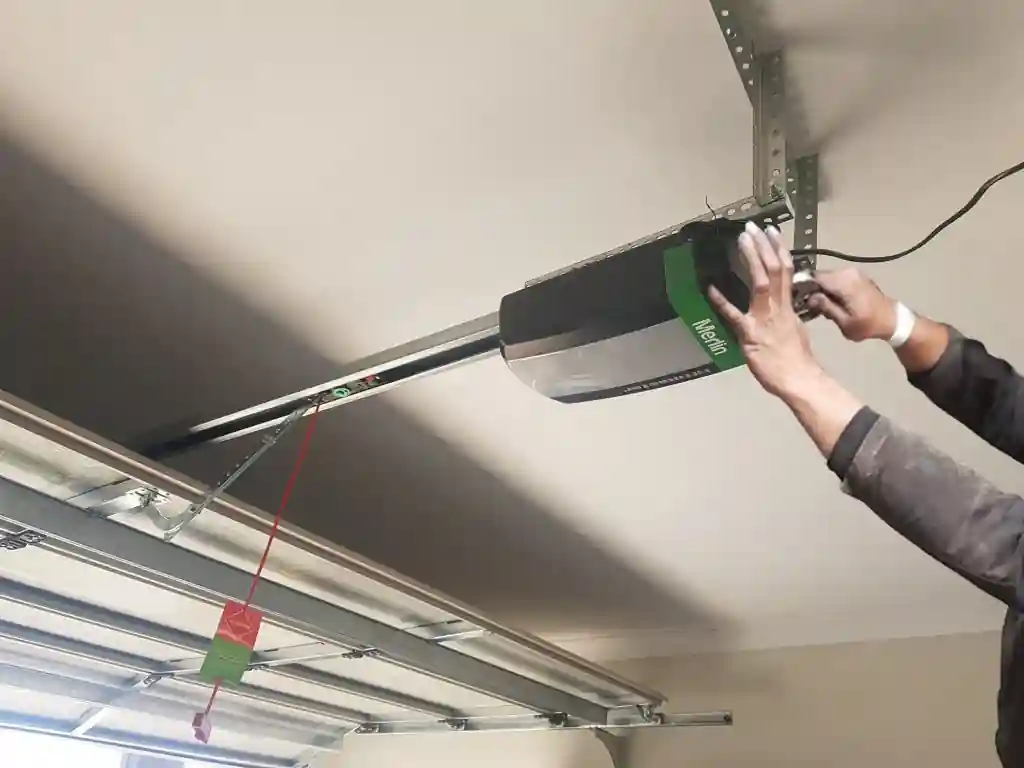
So — the power’s back on. Great. But your garage door opener still isn’t working like it used to. Why? Well, chances are the garage door motor is still disengaged from when you pulled the emergency release cord earlier. That’s normal.
Now it’s time to reconnect the automatic opener, so your door can open and close on its own again.
Re-engaging the Motor Safely
Most modern automatic garage door openers are designed to re-engage easily. But there are small differences depending on the brand (LiftMaster, Genie, Chamberlain, etc.). Here’s a general approach that works for most systems:
🔄 How to reconnect your garage door opener:
- Make sure the garage door is fully closed.
- Grab the emergency release handle and pull it toward the door — this re-locks the trolley to the track.
- You might hear a soft click as it reconnects.
- Press your garage door remote or wall button.
- The trolley should move and grab the opener’s carriage. Done!
🧠 Pro Tip: If nothing happens when you press the remote, don’t panic. First, check if the opener is properly plugged in. Then see if a circuit breaker has tripped. Make sure the photo-eye sensor isn’t blocked or dirty. Lastly, your opener might have reset to its default settings, so double-check that too.
Also — some newer smart garage systems need you to reset your garage opener manually after a power outage. That might involve unplugging the unit for 30 seconds, or holding down a specific button. The manual should help here. If not, brands like GG Garage Doors, STI Garage Door, or even Metro Garage Door Repair often have walkthroughs online.
And if you’re really stuck? Reach out to a garage door technician near you — it’s better than struggling with a half-connected motor and a door that won’t budge.
Bonus: How to Prevent Garage Access Issues During Future Outages
If you’ve made it this far — whether you’re reading in hindsight or mid-crisis — here’s a thought: maybe it’s time to future-proof your setup. Power outages aren’t rare anymore. Weather, aging infrastructure, random blackouts — they happen. And the garage door? It’s one of the first things you feel when power goes out.
So let’s talk prevention. Because figuring out how to open garage door without power once is fine… but doing it again and again? Not ideal.
🧊 Cold Weather Alert:
Don’t forget winter garage floor protection — snow and ice can cause sensors to fail or doors to freeze to the ground, making garage door opener issues worse during winter emergency situations.
Install Backup Power or Smart Technology
There are a few surprisingly simple things you can do to avoid getting stuck again:
✅ Garage Door Backup Options Table
| Solution | Description | Best For |
|---|---|---|
| Battery Backup for Opener | Attaches to most modern garage door openers. Keeps it running during outages. | Homes with frequent outages |
| Smart Garage Opener | Operates via Wi-Fi and sometimes mobile data. Some work even without power. | Tech-savvy homeowners |
| Manual Key Release Kit | Lets you open the door from outside in emergencies. | Detached garages |
| Surge Protector for Opener | Protects the system from voltage spikes during blackouts. | Older garage door motors |
🧰 Pro Tip:
If your garage door opener is more than 10 years old, consider a replacement. New models are quieter, faster, and often come with built-in battery backups and manual override options.
And if you’re worried about break-ins during an outage? Add a manual lock or even a security solution like a garage door deadbolt system. Some homeowners also use motion sensor lights or smart cameras as part of their setup — more about awareness than total prevention, but it helps.
Finally, label or tag your manual release cord clearly. A surprising number of people forget what it’s for — until they need it.
Common Mistakes to Avoid When Opening Garage Doors Manually
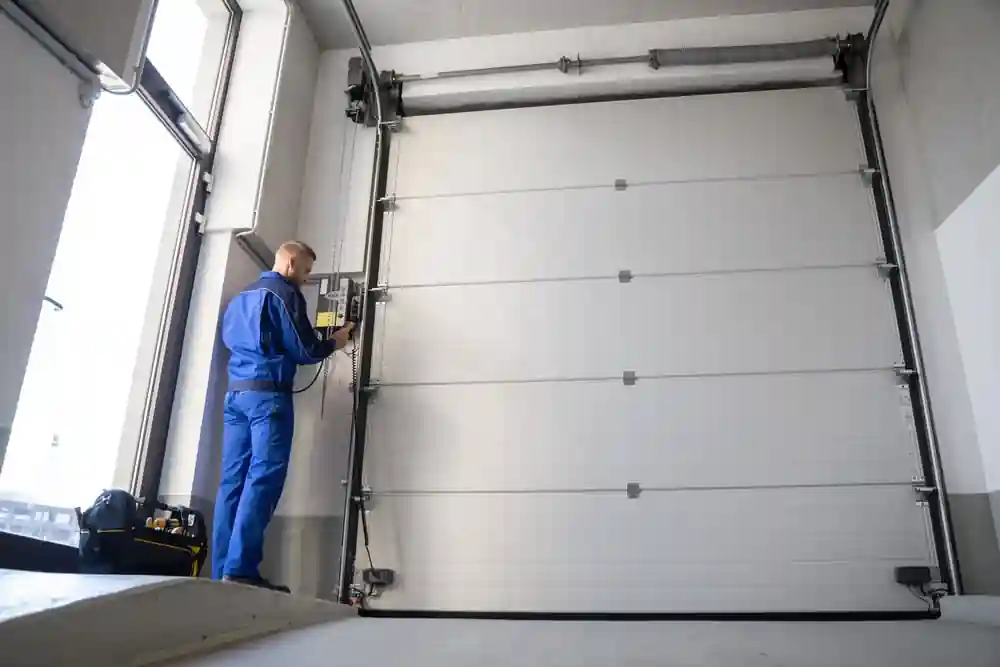
This part’s important. Because whether you’re working through a power outage, a jammed opener, or a malfunctioning garage door system, mistakes here can turn an inconvenience into a serious safety issue.
And let’s be honest, it’s tempting to just “give it a tug” and hope for the best. I’ve done it. It’s… not the best plan.
Don’t Force It – And Other Important Warnings
If you take one thing away from this guide, let it be this: if your garage door resists you, don’t fight it.
Here’s why.
🚫 Common Mistakes Table
| Mistake | Why It’s Risky | Safer Alternative |
|---|---|---|
| Forcing a stuck door | Can damage tracks, springs, or cause injury | Inspect for jam, call garage door repair service |
| Pulling release cord with door open | Door might crash down dangerously | Always release when door is fully closed |
| Lifting with broken spring | Risk of full weight drop, injury | Call a garage door technician |
| Bypassing a manual lock improperly | Can break lock or door mechanism | Use correct manual unlock method |
| Ignoring alignment issues | Makes the problem worse | Check garage door track, call repair |
💡 Pro Tip:
If you’re not sure what’s causing the problem — or the door just feels wrong — stop. Many people think garage doors are light because motors do the heavy lifting. But in manual mode? You’re dealing with 100–300 lbs of tension-loaded metal. It’s not worth guessing.
For any situation involving a jammed track, disconnected opener, unusual sounds, or an off-balance door, you’re much safer getting a garage door technician near you. Even just a quick inspection can save you from a costlier repair later on.
Conclusion:
Open garage door without power isn’t just inconvenient — it’s a test of what you know, and how prepared you are.
Hopefully, these seven essential methods — plus the bonus tips — give you more control the next time the lights go out. Whether it’s understanding your garage door system, knowing how to manually lift the door, or preventing future access issues altogether, a little prep goes a long way.
Frequently Asked Questions:
1. How do I open garage door without power from outside?
Use an emergency release kit with a key to pull the release cable. No kit? Call a locksmith or garage door technician.
2. Can I open the garage door manually from inside?
Yes — pull the emergency release cord (red rope near the opener). Only do this when the door is fully closed for garage safety.
3. What if I lost the garage key?
Without the key or access to your garage door code, call a security service or locksmith. Never force a manual lock.
4. Is it safe to open a garage door with a broken spring?
No. Trying to lift a door with a broken torsion or extension spring is dangerous. Call for garage door replacement.
5. Why is my garage door stuck halfway?
Could be a jammed garage ceiling track or broken trolley release arm. Wait for power or call a pro.
6. How do I reconnect the garage opener after power’s back?
Close the door, pull the manual release cord back toward the opener, then press the remote. Check for photo-eye sensor issues.
7. How do I protect my garage during future outages?
Install a battery backup, use a smart opener, and add winter garage floor protection to avoid sensor blockages.
8. Can smart garage doors fail during outages?
Yes — some show errors like SQL command failed, malformed data, or Cloudflare Ray ID. Check with your site owner or brand support.

